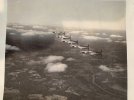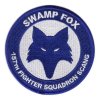They did, no doubt, but he used similar metrics like kill ratios and performance to make a good case.Eh? I'm not sure how one 'proves' that. Either way, the P-47 and P-51 did 'prove' themselves to be excellent fighters during the war.
-
Please take a moment and update your account profile. If you have an updated account profile with basic information on why you are on Air Warriors it will help other people respond to your posts. How do you update your profile you ask?
Go here:
Edit Account Details and Profile
You are using an out of date browser. It may not display this or other websites correctly.
You should upgrade or use an alternative browser.
You should upgrade or use an alternative browser.
Historical Research
- Thread starter Randy Daytona
- Start date
They did, no doubt, but he used similar metrics like kill ratios and performance to make a good case.
I still have serious doubts, more so if kill ratios were a big part of his research. Kill claims from WWII were notoriously inaccurate, and were more so earlier in the war when the P-40 and P-39 (P-400) were primarily used in addition to being much fewer in numbers as well. Operational usage of the P-39 was much more limited than the other 3 aircraft, only seeing limited US service, providing a much more limited set of data to base his assumption off of. Finally, almost every personal account I've read by pilots who flew several different types were pretty much universal in their preference for the later fighter types than the earlier ones to include Chuck Yeager among others.
I feel we are talking past one another. His research was pretty solid and it was really more about political-military decisions (all focused on strategic bombing) rather than which airplane was “better.” I’ll readily yield the floor to anyone who says the P-51 and P-47 were “better” aircraft for the mission supported by AAF leaders, strategic bombing because they eventually were.I still have serious doubts, more so if kill ratios were a big part of his research. Kill claims from WWII were notoriously inaccurate, and were more so earlier in the war when the P-40 and P-39 (P-400) were primarily used in addition to being much fewer in numbers as well. Operational usage of the P-39 was much more limited than the other 3 aircraft, only seeing limited US service, providing a much more limited set of data to base his assumption off of. Finally, almost every personal account I've read by pilots who flew several different types were pretty much universal in their preference for the later fighter types than the earlier ones to include Chuck Yeager among others.
I’ll readily yield the floor to anyone who says the P-51 and P-47 were “better” aircraft for the mission supported by AAF leaders, strategic bombing because they eventually were.
Well as far as I know, the P-40 and P-39 were never of the 8th AF, so were never part of the strategic bombing campaign (and neither had the range to be). Both aircraft were what we had at the beginning of the war, and held their own. The F4F performance wise, was inferior to the A6M, but again, it's what we had. Those early war designs bought the time to to field the P-51, F4U, and F6F. Most importantly, we let the aircrews access and develop tactics to best overcome performance differences in aircraft...............the man, not the machine.
Last edited:
Good points. This guys general argument is that the AAF did not approach fighter acquisition from a direct air superiority point of view (clearing the skies of enemy aircraft) but rather a bomber protection point of view. They didn’t really care about kills beyond keeping bombers protected. On the other side of the argument, I have always held that the Allied air forces held the air line in ‘42 and ‘43 while the US enabled her pilots to gain critical hours and skills.Well as far as I know, the P-40 and P-39 were never of the 8th AF, so were never part of the strategic bombing campaign (and neither had the range to be). Both aircraft were what we had at the beginning of the war, and held their own. The F4F performance wise, was inferior to the A6M, but again, it's what we had. Those early war designs bought the time to to field the P-51, F4U, and F6F. Most importantly, we let the aircrews access and develop tactics to best overcome performance differences in aircraft...............the man, not the machine.
Command decisions, The air war in Europe was run by the the 8th AF and RAF Bomber Command. Based on theories that weren't proven until the advent of PGMs.AAF did not approach fighter acquisition from a direct air superiority point of view (clearing the skies of enemy aircraft) but rather a bomber protection point of view.
Too true, but it has always been the purview of historians to debate those decisions. We sell it as “lessons learned.”Command decisions, The air war in Europe was run by the the 8th AF and RAF Bomber Command. Based on theories that weren't proven until the advent of PGMs.
A bunch of my uncle’s military records arrived from my cousin. 15th AF, 52nd Fighter Group, 5th Fighter Squadron confirmed.
Among the airplanes in the logbook were the P-40, P-47 and the P-51. Bunch of logbook entries with the mission role of escorting mostly B-24’s (but 1 said escorting P-38’s) and targets such as Regensberg. Finally, a P-51 exam (max inverted time: 10 seconds, max dive speed: 505 mph, war emergency power: 3000 rpm at 67” of manifold pressure.
It has been a lot of fun digging into records - and just getting started…

Among the airplanes in the logbook were the P-40, P-47 and the P-51. Bunch of logbook entries with the mission role of escorting mostly B-24’s (but 1 said escorting P-38’s) and targets such as Regensberg. Finally, a P-51 exam (max inverted time: 10 seconds, max dive speed: 505 mph, war emergency power: 3000 rpm at 67” of manifold pressure.
It has been a lot of fun digging into records - and just getting started…

Cool! Did he also have Korean War era service? The P-51’s in the photo are post WWII in early USAF livery,A bunch of my uncle’s military records arrived from my cousin. 15th AF, 52nd Fighter Group, 5th Fighter Squadron confirmed.
Among the airplanes in the logbook were the P-40, P-47 and the P-51. Bunch of logbook entries with the mission role of escorting mostly B-24’s (but 1 said escorting P-38’s) and targets such as Regensberg. Finally, a P-51 exam (max inverted time: 10 seconds, max dive speed: 505 mph, war emergency power: 3000 rpm at 67” of manifold pressure.
It has been a lot of fun digging into records - and just getting started…
View attachment 35191
I am still looking. I would assume he was with either the reserves or the South Carolina Air National Guard.Cool! Did he also have Korean War era service? The P-51’s in the photo are post WWII in early USAF livery,
On a separate note, no word yet from the National Archives on the 3 separate records requests I requested 5 weeks ago.
My cousin thinks it was the South Carolina Air National Guard after the war, which should be the 157th Fighter Squadron out of McEntire (between Columbia and Sumter). The unit is still in existence today, currently flying F-16’s.Cool! Did he also have Korean War era service? The P-51’s in the photo are post WWII in early USAF livery,
Still no update on the records request from April- if anyone plans on doing research, expect a substantial wait.

NARA got hit hard by COVID and is having serious staffing issues. They have a 2 year backlog.Still no update on the records request from April- if anyone plans on doing research, expect a substantial wait.
GroundPounder
Well-Known Member
NARA got hit hard by COVID and is having serious staffing issues. They have a 2 year backlog.
I don't doubt what you are saying is true, but I want to live long enough that the answer to every shortage and logistical issue is not " Covid "
I don't doubt what you are saying is true, but I want to live long enough that the answer to every shortage and logistical issue is not " Covid "
It's increasingly becoming "Inflation"... does that count?
